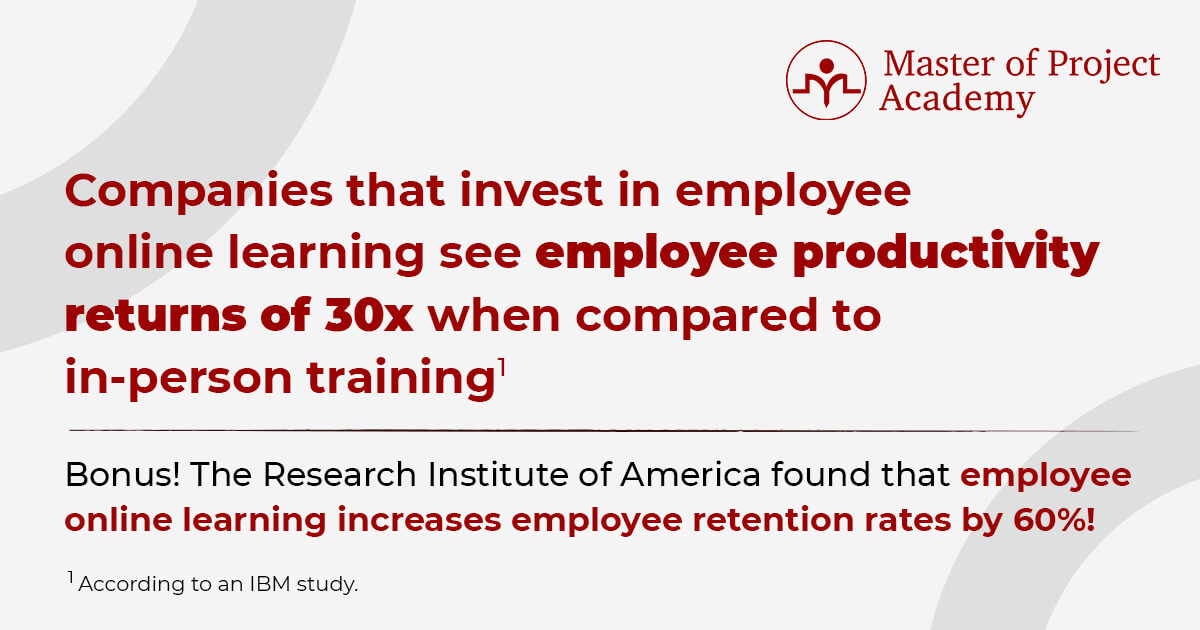Master of Project Academy’s 8-part series Horrible, No Good Bosses – The True Cost of Poor Leadership was created to address the most common ways poor leadership results in flat/declining revenues and increased expenses. In this series, we will explore the topics of Communication, Networking, Emotional Intelligence, Leadership, Discipline, Teamwork, Adaptability, Conflict Resolution, Empathy, Positivity, Decisiveness, and Persuasion.
In the previous 6 of our 8 Part Series Horrible, No Good Bosses – The True Cost of Poor Leadership, we have discussed autonomy, purpose, growth, connection, engagement, and many other elements of effective leadership. In this episode, we will address poorly performing employees.
- Read the sith article of the Horrible, No Good Bosses Blog series which is about employee strengths.
- Check out the very first article of our Horrible Bosses Blog, No Good Bosses Blog series.
Elaine’s Story
Elaine was recently assigned a new project and she is in the requirements-gathering phase. She’s had four meetings with the key stakeholders and is expected to provide some baselines within the next two weeks. With each meeting, tensions rise more and more. Her two highest-performing team members refused to attend the last meeting. They both have said they refuse to work with two other team members, Moshami and James. Because Elaine is working in a weak matrix organization, she doesn’t have a lot of authority. Since Moshami and James both report directly to Mark, Elaine has scheduled a meeting to discuss what’s going on.
In Elaine’s meeting with Mark, she relayed that Moshami has been consistently resistant to attending meetings and providing the deliverables she has been assigned. Work that she needed to complete two weeks ago is still outstanding and she refuses to give an estimated time that she can get it done. She consistently reminds everyone that she is a highly sought out resource due to her skill set and they are lucky to have her on the team. James is condescending to the other team members and makes sexist and racist comments. In the last meeting, James mentioned he thought the “ladies on the team should bring in breakfast for our next meeting.”
At this rate, Elaine is not going to be prepared for her next Gate Review. She is at the end of her rope and asks Mark for help, requesting that he either assign other resources or help her address the performance and behaviors of his two staffers. Mark states that he has no other resources available and that meeting with Moshami and/or James will just make things worse. He is certain that things will calm down soon and cautions Elaine to be especially careful in her handling of Moshami as she is their “rock star” and, without her, they will be lost. He reminds Elaine that James is the nephew of one of the executives and advises that she tread lightly.
- Our PM Core™ – Project Management Training for Business helps organizations develop their teammates into practitioners who can deliver measurable returns

What’s the cost of toxic employees to the companies?
While Elaine could probably handle some of these concerns on her own through effective project leadership, let’s focus on Mark and the deficiencies in his leadership. He’s allowing his “rock star” and “nepo-hire” to poison this team. Not only do these toxic employees cost their companies money by failing to perform their own job duties and responsibilities, but they also cost their organizations by negatively impacting the performance of their peers. Can you guess what the best predictor was for employees to resign during the beginning of the Great Resignation? Toxic Culture! The toxic culture was mentioned as the reason 10x more than compensation. ¹
Let’s look at the costs to an organization when leaders won’t address poor performance and behavior: ²
- $223 Billion – cost of employee turnover by US organizations in the last five years. ²
- 28% of HR time is spent addressing problems that Managers fail to address. ²
Steps for Managing Poor Performance in Employees
Managing poor performance in employees is a complex process, but there are a few steps that are required in all scenarios:
Step 1 – Stay Engaged.
Leaders need to stay engaged with their teams so that they are “in the know” of what is going on in their organizations. Being able to identify the issues early is key.
Step 2 – Say Something.
It is imperative that leaders address the issues as soon as they occur. Ignoring the issue because it is uncomfortable, time-consuming, etc. will only allow it to grow and further infect the project and team.

Step 3 – Keep Records.
Documenting the process is a crucial step to ensure that the organization is protected legally, but is also necessary to provide a record to any future supervisors.
Step 4 – Create a Plan.
With the poorly performing employee, create a plan to address the deficiencies with SMART goals that clearly define what will occur should they not achieve the objectives set.
Step 5 – Follow the Plan.
Regularly follow up with the employee, ensuring that all milestones are reached. When they meet their goals, celebrate their successes. When they fail to meet their goals, follow the plan’s guidance for the next steps.
Step 6 – Reflect.
Consider what you, as the leader, could have done to prevent the issue, better responded once it occurred, etc. Growing as a leader requires that you reflect on your own strengths and weaknesses. When you have a poorly performing employee, it is especially critical that you do so.
Conclusion
Today’s leaders are expected to be able to address poor performance and provide their teams with environments where teams can effectively perform their job duties that best meet the organization’s strategic goals. If your organization needs assistance with leadership training and education, Master of Project Academy’s Leadership Program can help. In this program, your leaders will get instructive and hands-on training through interactive exercises, case studies, templates, and techniques that can be customized to your organization’s specific needs. For additional information, click HERE.

In our next, and final, Horrible, No Good Bosses Blog, we will discuss how we can provide our teams with a tangible, practical tool that can pull together elements of all of our topics covered through our first 7 blogs of this series.

 Written by: Sandra Worley
Written by: Sandra Worley